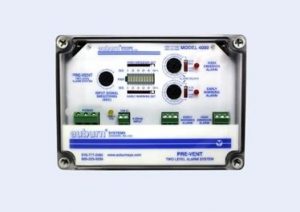 Optimize dust collector operations in five simple steps
Optimize dust collector operations in five simple steps
October 27, 2017 REDWIRE is news you can use from leading suppliers. Powered by FRASERS.
Posted by Firing Industries Ltd
The business objective of FIRING INDUSTRIES LTD. is to consult with clients to select and supply technically complex PRO... Read more
Subscribe
Free REDWIRE e-newsletter

Dust collector maintenance often gets overlooked, or rushed, which can lead to costly mistakes; however, there are five baghouse maintenance steps that plants can take to ensure their dust collectors are performing optimally, enabling them to help keep plants safe and clean. These five steps were outlined in a recent blog post by Auburn Systems.
Step 1: Confirm that gauges are working properly
According to Auburn Systems, differential pressure readings guide nearly every baghouse maintenance and operation decision, which is why accurate readings are essential. DP sensors require regular cleaning and periodic replacement, as even a small amount of dust in the airlines can result in false readings and, if it enters the pressure sensor, will quickly cause irreparable damage. In addition, the airlines should be cleaned at least every two weeks to keep them in good working order.
Step 2: Empty the hopper
Dust collector hoppers are designed for temporary collection only, and should never be used for storage of material, as this can disrupt the airflow within the unit and lead to excess wear on the filters, as well as dust re-entrainment. In some cases, it can even plug the system by blocking off inlets. Additionally, material kept in the hopper creates a combustible dust hazard by providing an ample source of fuel for any potential ignition source.
Step 3: Use the correct parts
Filters, cages or cartridges must fit correctly to function at peak efficiency. Further, filter media with proper treatments and coatings must be used according to application requirements and system design. Ordering the wrong parts, or neglecting to verify proper fit, can result in improper parts being used, decreasing plant efficiency.
Step 4: Correctly program cleaning settings
Baghouses run best when using a clean, on-demand control system. While many systems come standard with these controls, sometimes principles of cleaning based on DP are overlooked, or the plant defaults to a simple timer-based cleaning mode. This often results in inefficient cleaning, wasted compressed air and shorter filter life.
Step 5: Make sure the bag leak detection system is set correctly
Many plants with bag leak detection systems fail to deploy their systems properly. Incorrect setup or implementation into the plant’s procedures can result in frequent false alarms that plant operators and technicians eventually grow tired of chasing down. That can lead to casual response to legitimate alarms or, in some cases, changing alarm thresholds, creating many maintenance, operational and air quality problems.
The final step
By making sure not to overlook these crucial steps, plants can ensure their baghouses stay running at peak operational condition. To learn more, download a free copy of Auburn Systems’ “Guide to Baghouse Maintenance”.
Auburn Systems dust collectors are available in Canada through Firing Industries. For more information, contact Firing Industries’ application-sales engineers at ddubuc@firing.com or (877) 688-0974.
Share
Posted by Firing Industries Ltd
The business objective of FIRING INDUSTRIES LTD. is to consult with clients to select and supply technically complex PRO... Read more
